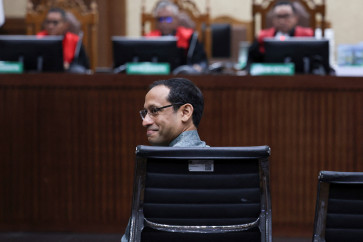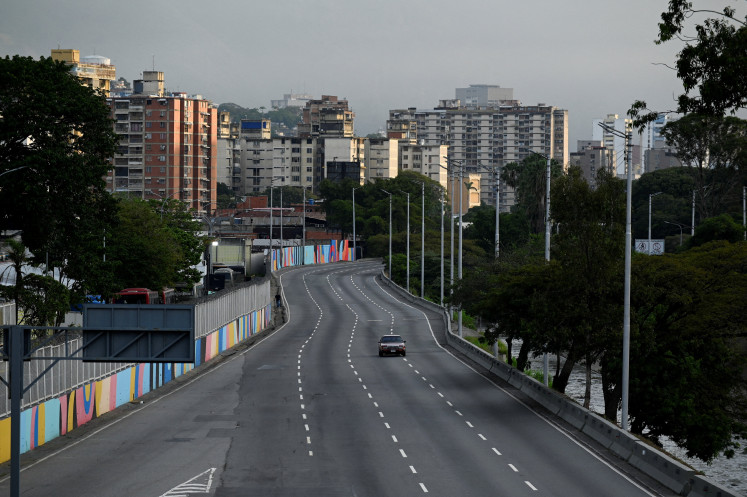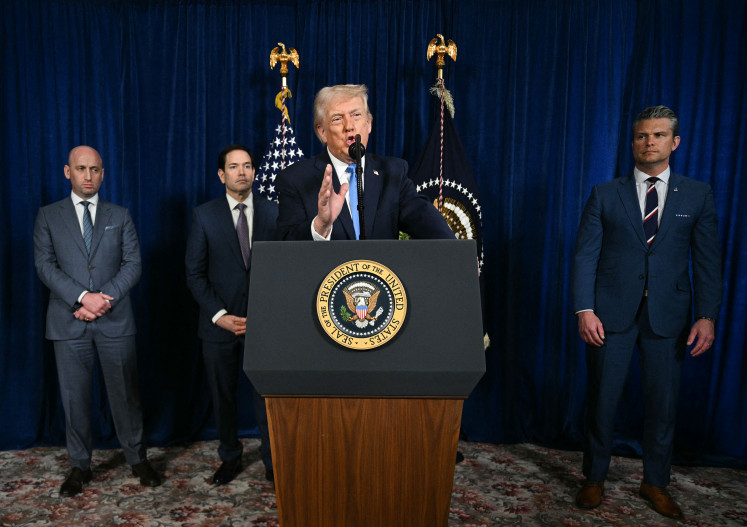Popular Reads
Top Results
Can't find what you're looking for?
View all search resultsPopular Reads
Top Results
Can't find what you're looking for?
View all search resultsThe neo-nostalgia of Malay culture
With more than 250 million Malays living in Indonesia, Malaysia and Brunei, the three countries share huge human capital to be mobilized for mutual benefit
Change text size
Gift Premium Articles
to Anyone
W
ith more than 250 million Malays living in Indonesia, Malaysia and Brunei, the three countries share huge human capital to be mobilized for mutual benefit. Putting political factors aside, they share the same language and cultures that can be revitalized collectively. However, it is quality — not quantity — that matters.
Since 1972, the three countries have been working closely within the framework of Majelis Bahasa Brunei-Indonesia-Malaysia (MABBIM), the language council of Brunei, Indonesia and Malaysia. While explicitly aimed at cooperation in language areas, the mission could be expanded beyond it.
While originating from the same language, the language spoken in the three countries has undergone its linguistic rights and deserves due respect.
Due to multilingualism and a huge number of speakers, the Indonesian language has diverged considerably from the Malay spoken in Malaysia and Brunei.
Dwelling on the corpus of 518,040 words to look for a similarity index, Sugiyono (2008) identified 34 percent were shared by Malaysia and Brunei, 28.5 percent were shared by Indonesia and both Malaysia and Brunei, and only 26.0 percent were shared by Indonesia and Brunei. Despite the linguistic divergence, the three languages are still mutually intelligible.
It is estimated that MABBIM has generated more than 350,000 scientific and technological terms. Seventy-five percent of terminologies in chemistry, physics and biology in junior and senior high school textbooks are those generated by MABBIM, 12 percent of them are spelled differently and only 13 percent are not MABBIM-generated (Sugono, 2008).
Thus, MABBIM has undertaken attempts for the development of the language for academic and sophisticated discourse among the three countries.
Religion is also another consolidating factor for the peoples of these countries, where Sunni Muslims dominate. The language and religion are the primordial foundations for the renaissance of the Malay tamadun (civilization). It is reminiscent of the 14th and 15th century archipelago, long before western colonialists came to conquer the region for centuries.
It has been reiterated by many leaders, including Mahathir Muhammad, that Islam should be the foundation of the renaissance. He (2002) once strongly warned, “The real problem that we face in a globalized world is that we reject the brotherhood of Islam. Sadly, while others are uniting and consolidating their strength, we are fragmenting and drifting further and further apart”.
Apparently for him, to unify the Malay within the brotherhood of Islam is the real jihad. As Muslims hold it, Islam is rahmatan lil alamin, namely, blessings for the whole universe. MABBIM has laid the language foundation for establishing the brotherhood beyond language, namely tamadun (civilization) in general.
The tricky question is how to develop creativity among the Malays in the region. A creative culture profile can be constructed from shared values, issues and questions.
Promoting the Malay language as a stepping stone for cultural renaissance is to counter-balance English, spoken not only by 400 million native speakers but also by the world community.
Cultural creativity is vital for survival in global competition, mainly in three domains, namely liberal democracy, the free market and science and technology, all of which are mediated by English. Thus, creativity should enable the Malays to survive challenges in these domains. The following are the major strategies to ponder.
First, within the Malay renaissance, ethnicity should not be perceived as a negative or harmful notion. Indigenous languages are an index of natural and cultural resources, such as fauna, flora, geography and culture in general. The fact that Indonesia has hundreds of ethnic languages should not be perceived as a barrier of communication. In fact, those languages have enriched the vocabulary of modern Indonesians.
Second, the Malay language should be maintained as the major medium of cultural revitalization in the region. The recognition by the United Nations Education, Scientific and Cultural Organization (UNESCO) of Feb. 21 as the world’s mother tongue day is indicative of its importance for sustainable civilization.
At this juncture it is relevant to underscore the importance of reinterpreting the classic works of Abdullah bin Abdul Kadir Munsyi and Raja Ali Haji, to mention just a few.
Third, Malay culture should be a foundation of national development. Cultural maintenance and protection stem from respect and pride of shared common cultural values. However, respect and pride are not sufficient. They should be rationalized to support creativity. History should serve as a guideline for the future.
Fourth, it is important to introduce Malay literary works to the world, among others, through translation. The translation of Indonesian Pramoedya Ananta Toer’s novels into foreign languages, for example, demonstrates a good example of making local culture global. Malay-English translations and vice versa should be done extensively as to promote the Malay civilization on the international stage. This would be a dialectical process to advocate the culture.
Fifth, it is important to introduce the Islamization of knowledge through the Malay language. For Muslims, the Koran is not only the guidelines for life, but also the ultimate source of knowledge. What is urgent, though, is the rationalization. By rationalization is meant concerted scientific efforts to make sense of what is texted in the Koran through the reinterpretation of classic works, the Islamic reinterpretation of modern scientific findings and the publications of research into Islamic civilization.
This neo-nostalgic approach to cultural revitalization is not a resounding pride and appreciation of past glories. As a matter of fact, it functions as a trigger of invigorating commitment, self-consciousness and morality in facing the challenges. Myths, legends, folklores, aural traditions and history constitute an object of study that should inspire infinite creativity.
Apparently, educators should identify what constitutes great books (karya adiluhung). Such a book functions as an intellectual bridge across the generations. To this end, the Malay scholars should have a strong commitment to publishing in Malay to inculcate young minds that the language has the potential to be a medium of scientific advancement. A dynamic culture stems from free, individual thinkers. Eventually, creativity will naturally flourish from the three countries.
The writer is a professor at the Indonesia University of Education (UPI) Bandung.










